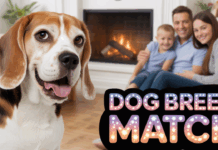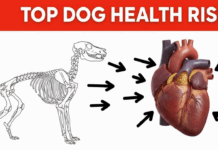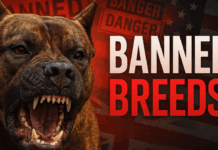Last Updated on October 18, 2024 by Dogs Vets
Pet parenting is popular in the US, with millions of Americans owning these lovable animals. According to Forbes, a 2024 survey revealed that nearly 65.1 million households in the country have at least one dog. Besides canine companions, cats are the second most popular pet, being raised by 46.5 million families. Fish come next, with 11.1 million households owning them.
While dogs are clear favorites, owning them can be a responsibility for owners. Having an aggressive canine can make your life even harder. Understanding and managing it can be a daunting task at home and outside. You may have no idea what can trigger aggression, and when it may happen.
As a responsible owner, you should approach this issue with patience and empathy, employing positive reinforcement rather than punishment. You can help transform aggressive tendencies into more manageable behaviors with a structured behavior modification plan.
Here is an actionable guide to ensure manageable behavior, ensuring a safer environment for your dog and those around them.
Recognize the Aggression Triggers
The first step to dealing with pet aggression is to understand the triggers that provoke aggressive behavior. The Spruce Pets lists some common triggers that might cause your dog to be aggressive. These include fear, possessiveness, frustration, and illness or injury. Pain caused by arthritis, bone fractures, and injuries can make a dog aggressive. Likewise, it may show such tendencies due to cognitive decline or brain tumors.
Territorial instincts and resource guarding (e.g., food, toys) could also trigger such behavior. Keeping a journal of incidents is a good idea. It can help dog parents identify patterns and specific triggers, allowing them to avoid these situations in the future. Also, keep an eye on the early signs of aggressive behavior to prevent the situation from worsening.
Prioritize Safety
If your dog shows aggressive tendencies, safety should always be your top priority. Whether at home with your family or outside with people around, your pet can be dangerous. Many incidents of canine attacks on US Postal Services (USPS) employees are reported every year. The Veterinary Practice News reports that Chicago, Houston, and Los Angeles had the maximum number of incidents in 2023.
If you live in Chicago and are bitten by a dog during an aggressive incident, you can take legal action. You may hire the best personal injury lawyer in Chicago to seek compensation for your injuries. In addition to medical bills, victims can claim compensation for pain and suffering, emotional trauma, and lost wages.
TorHoerman Law notes that the Chicago dog bite law states that the victim has legal grounds if the attack causes injuries requiring medical treatment. As an owner, you can be held liable for negligence leading to the incident. It is better to take adequate precautions and avoid such events in the first place.
Use aggression management tools like leashes, head halters, or muzzles while you work on behavior modification. Ensure that your dog is confined or controlled in situations where aggression may occur, especially around children or strangers.
Seek Professional Help
Research shows that aggression can be a problem beyond the common triggers. Dogs with defensive aggression had lower concentrations of serotonin than those with non-aggressive disposition. This means that your canine companion may need more than love and care to address the issue.
Consulting a certified canine behaviorist or trainer is often required for effective behavior modification. They can assess your pet’s specific issues and devise a tailored training plan to address them. Avoid self-taught methods as they may exacerbate the problem. Professional guidance ensures that you are using the right techniques for your dog’s needs.
Also, consult your vet regarding your dog’s behavioral issues. At times, certain dietary changes may help curb these problems effectively. They may also recommend some nutritional supplements to promote a calm disposition.
Implement Positive Reinforcement Training
Using positive reinforcement is another proven way to modify aggressive canine behavior. No matter how angry you feel when your pet fails to obey, displaying your feelings is the last thing you should do. If you do it, your pet may replicate your behavior and become even more aggressive.
According to PetMD, positive reinforcement is about delivering a physical or verbal prompt to reward a specific action. If your pet follows your command, you give it something it wants. It may be kind words, a hug, or a favorite treat. Repeat this process several times to ensure that the dog understands the value of obedience and good behavior.
As a rule, you must reward your dog instead of punishing it for aggression. Techniques like desensitization and counterconditioning can help change its emotional response to triggers over time.
Maintain Routine and Structure
The final step to curb canine aggression is to maintain structure and routine for predictability. Dogs thrive on routine as it provides them with a sense of security. Regular exercise, mental stimulation, and consistent training sessions can reduce pent-up energy that may contribute to aggression.
Similarly, ensure that they do not feel anxious. Being away beyond a specific timeline can cause separation anxiety, which becomes a cause of aggression. If you need to leave unexpectedly, ensure that someone familiar is around to look after your pet. Talk to your pooch gently and explain that you will be back soon. Establishing clear boundaries and expectations is also important. It enables your dog to understand what behaviors are acceptable.
Frequently Asked Questions
How to handle a dog who is aggressive towards its owner?
A dog’s aggression towards its owner can be hard to deal with, but it is not impossible to manage. Avoid confrontational training techniques like yelling or physical corrections because these can escalate aggression. Focus on building trust through positive reinforcement and consult a veterinarian about potential underlying issues and solutions.
How do I protect my child from aggressive dogs?
Educate your child on safe interactions with dogs. Teach them never to approach a dog that is eating or sleeping. They should also always ask permission before petting. Supervision during interactions is essential for safety. Children should be taught to recognize warning signs of aggression, such as stiff body language and growling.
How do you prevent aggression in dogs?
Preventing aggression requires early socialization and exposure to various environments, people, and other animals, This should happen ideally during a dog’s formative months. Also, use positive reinforcement to encourage good behavior and steer clear of punishment-based training methods. Regular exercise and mental stimulation also promote a balanced demeanor in dogs.
Raising an aggressive pet can be challenging for dog parents. However, there are ways to deal with the situation and ensure discipline and easygoing behavior for your canine buddy.
By understanding the complexities of canine aggression and implementing these strategies, you can create a safer environment. It will also help you foster healthier relationships with your furry companions.

















